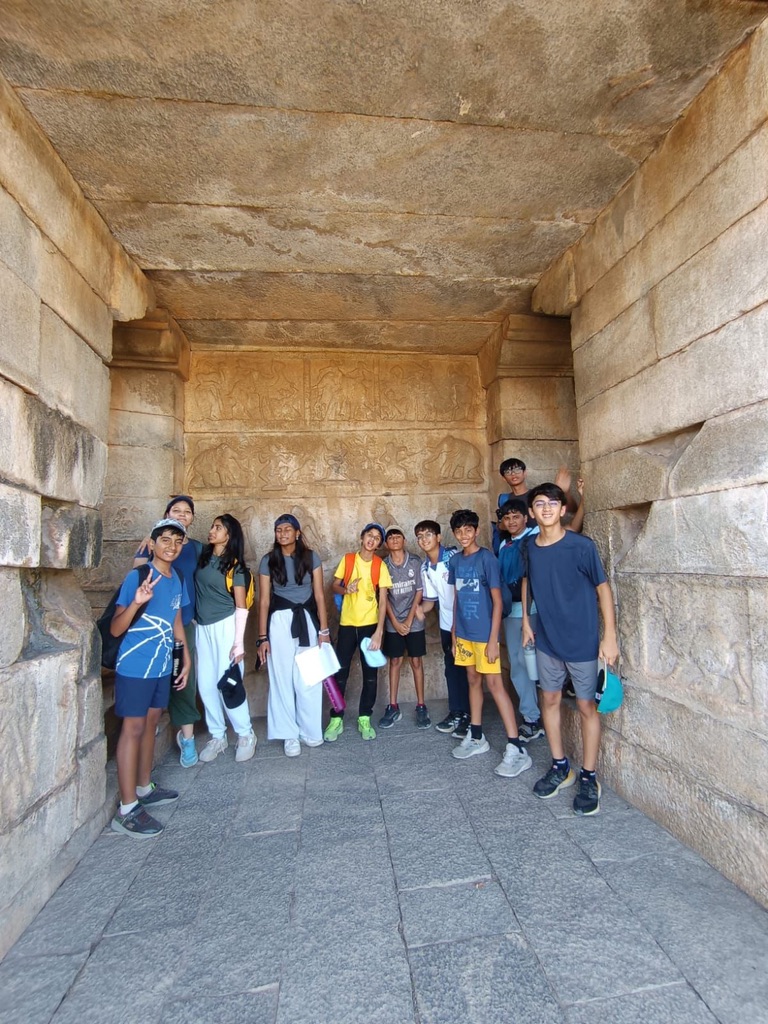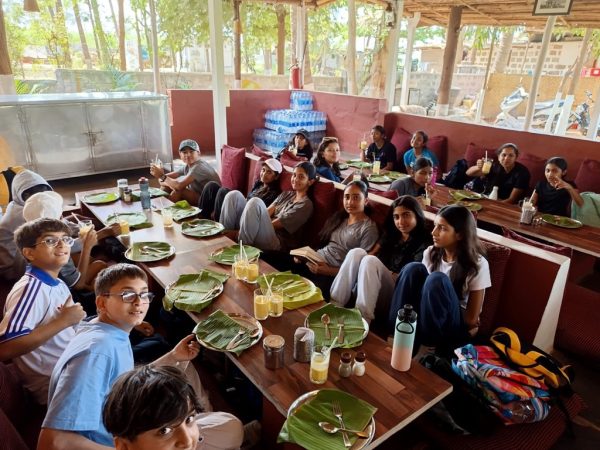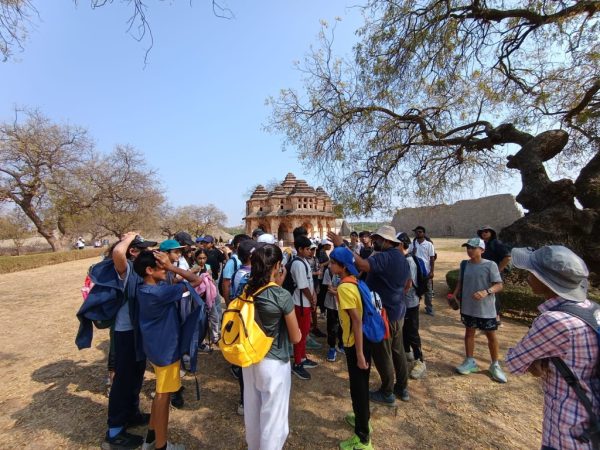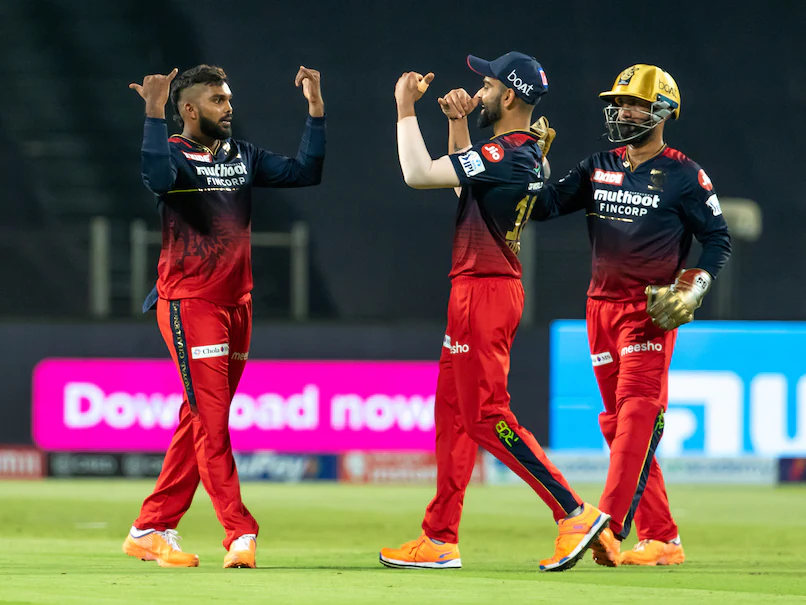Picture this: ancient stone temples, towering boulders, and lush green landscapes coming together in Hampi, a UNESCO World Heritage Site that dates back to the Vijayanagara Empire. Our trip to Hampi was an interesting and eye-opening experience, offering us a glimpse into the past while giving us time to explore and learn together. The long drive from Hubli to Hampi helped us learn more as we talked about the city’s history and what we might see. When we finally arrived, the landscape of massive boulders and centuries-old temples was unlike anything we had seen before. It felt as if we had stepped into a different time.
Our first stop was the Vittala Temple, one of Hampi’s most famous landmarks. The intricately carved stone chariot at the entrance was impressive, and we were curious about the temple’s famous musical pillars, designed to produce different notes when tapped. While it was fascinating to think about how people centuries ago built such structures, we wondered how people could build something like that at that time. Back at the hotel that evening, we had a short introduction to Hampi’s history. It was interesting to hear about the Vijayanagara Empire and how this grand city once thrived. While we may not have been completely captivated by every moment, the trip was a unique experience that gave us a new appreciation for India’s rich history.
On our second day, we had an action-packed schedule with several activities lined up. Our first stop was the Archaeological Museum in Hampi, where we saw a variety of ancient artifacts and structures that offered a glimpse into the region’s rich history. Next, we visited the Royal Enclosure, a grand complex that once served as the political and ceremonial hub of the Vijayanagara Empire. It housed the king’s palace, underground chambers, and several impressive structures, including an intricately designed stepwell.
As part of a scavenger hunt, we explored different landmarks, trying to imagine what life must have been like when this place was bustling with activity. One of the structures we came across had a lion’s head carved into it, while its pillars featured Islamic-style designs, showcasing the empire’s unique blend of Hindu and Islamic architecture. This fusion was also evident in the Lotus Mahal, one of the most stunning structures we visited that day. The palace was designed to resemble a blooming lotus flower with its elegant, arched windows and domes. Historians believe it was a recreational space for royal women, protected by surrounding watchtowers.
On our third day, one of the most exciting activities yet was the mock excavation. Divided into teams, we carefully dug through the soil, searching for hidden artefacts. Every discovery sparked curiosity, and we enjoyed developing theories about what each object might have been used for. This experience made us realise how archaeologists piece together history from fragments of the past. After a picnic lunch, we went on a safari to spot sloth bears in their natural habitat. All of us were lucky enough to see 8 of them moving through the forest, while some found the waiting a bit slow, it was a fascinating experience.
On our final day, we began early with a sunrise hike up Matanga Hill, one of the highest points in Hampi. The climb was steady, and once we reached the top, we spent about an hour taking in the view of the sun rising over the rocky landscape. During this time, we also learned about the geological formations of these hills and how they had developed over millions of years.
After the hike, we packed up and started our journey back to Hubli, where we spent the evening swimming before getting some rest. The next morning, we boarded our flight back to Mumbai, marking the end of our trip.
Our visit to Hampi allowed us to explore an important historical site and understand more about the Vijayanagara Empire. From ancient temples and grand palaces to the blend of Hindu and Islamic architecture, the trip provided insight into a fascinating period of Indian history. While some moments stood out more than others, the experience allowed us to see a different side of India’s heritage.









